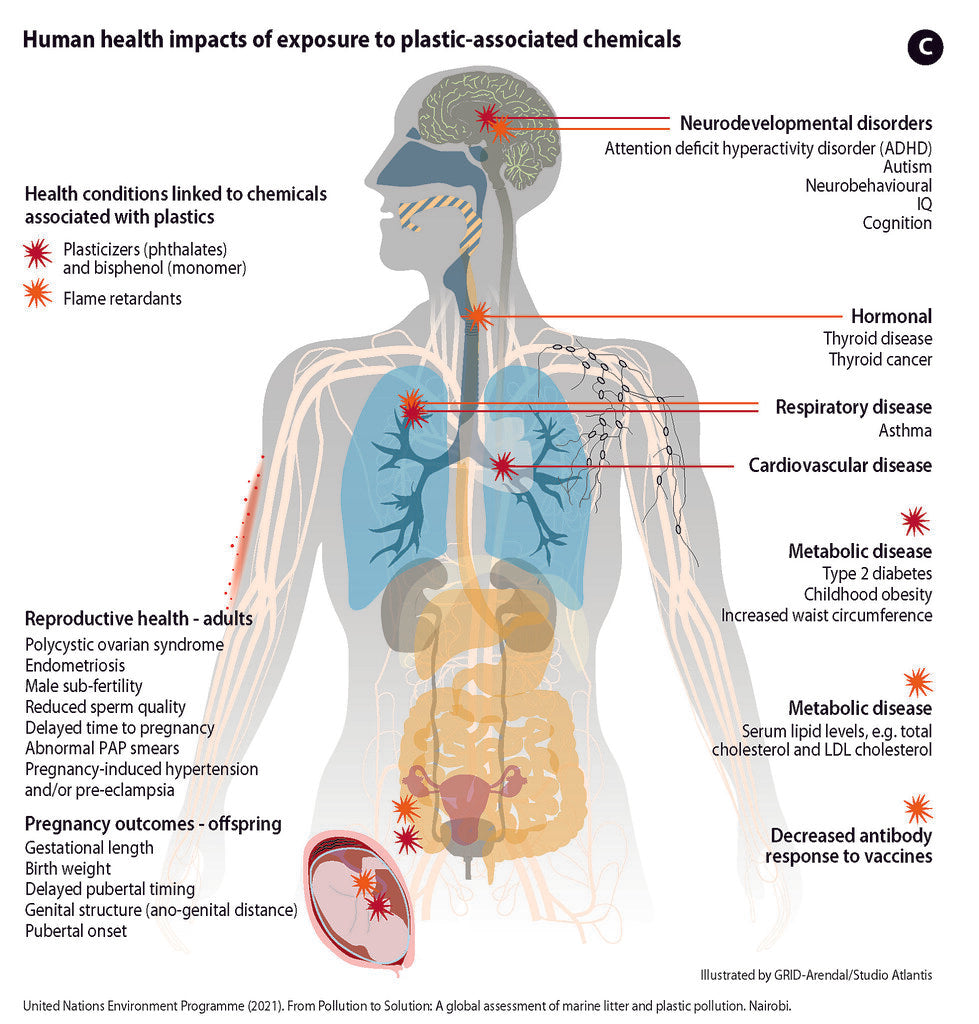Plastic pollution has become an omnipresent environmental issue, and microplastics, tiny particles less than 5mm in diameter, are at the forefront of this crisis. These particles, originating from the breakdown of larger plastic debris and everyday products like cosmetics and synthetic clothing, have infiltrated our bodies of water, food supply, and even the air we breathe. This article explores the effects of microplastics on human health and aquatic life, providing data and sources to underline the severity of the issue.
Microplastics and Human Health
Pathways of Exposure
Humans are exposed to microplastics through various routes, including ingestion, inhalation, and skin contact. Studies have found microplastics in seafood, salt, honey, and bottled water, leading to an estimated consumption of 39,000 to 52,000 microplastic particles annually. These particles also enter our bodies through the air we breathe, particularly in urban environments where synthetic fibers from textiles contribute significantly.
Health Concerns
The health implications of microplastic exposure are concerning:
-
Physical Harm: Microplastics can accumulate in the digestive system and potentially translocate to other organs, causing physical damage.
-
Chemical Exposure: Microplastics can adsorb harmful chemicals like pesticides and heavy metals from the environment, releasing them into the body upon ingestion. This exposure can lead to various health issues, including toxicity and endocrine disruption.
-
Immune Response: Ingested microplastics may trigger inflammatory responses and stress the immune system, potentially making individuals more susceptible to diseases.
-
Respiratory Issues: Inhalation of microplastic fibers can cause respiratory problems, including inflammation and lung tissue damage.
Impact on Aquatic Life
Ingestion and Accumulation
Microplastics have permeated aquatic ecosystems, affecting over 700 marine species. These particles are often mistaken for food and ingested by marine organisms, from plankton to whales. This ingestion can cause physical harm, such as blocking digestive tracts, and lead to malnutrition and death in severe cases . Moreover, microplastics can bioaccumulate in the food chain, resulting in higher concentrations in predators, including humans who consume seafood.
Health Effects on Marine Life
-
Growth and Reproduction: Microplastics have been shown to impair growth and reproduction in marine organisms. For instance, fish exposed to microplastics may exhibit reduced feeding behavior and stunted growth.
-
Toxicity: Microplastics can carry toxic pollutants, which may cause physiological stress, organ damage, and even death in marine life.
Quantifying Microplastic Consumption
To better understand the scale of human exposure, consider the weight of microplastic particles consumed annually. The estimated 39,000 to 52,000 particles consumed per year translate to approximately 0.00624 to 0.832 grams annually. Over an average lifetime of 80 years, this amounts to a total consumption of 6.24 to 832 grams of microplastics.
To put this into perspective:
-
6.24 grams is slightly more than the weight of a single sheet of A4 paper.
-
832 grams is comparable to the weight of nearly a full small bag of sugar or roughly 2.4 cans of soda.
Conclusion
The pervasive presence of microplastics in our environment poses significant risks to both human health and aquatic life. While the full extent of these risks is still being studied, the evidence so far underscores the need for urgent action. Reducing plastic pollution requires coordinated efforts from governments, businesses, and individuals, focusing on reducing plastic use, improving waste management, and supporting policies that limit plastic production and disposal. By taking these steps, we can work towards a cleaner, healthier planet for future generations.
Sources
1 Environmental Science & Technology
2 World Health Organization
3 Nature Communications
4 Marine Pollution Bulletin
5 Environmental Pollution
6 Frontiers in Environmental Science
7 International Journal of Environmental Research and Public Health
8 Particle and Fibre Toxicology
9 Science Advances
10 Ecotoxicology and Environmental Safety
11 Environmental Health Perspectives
12 Journal of Hazardous Materials
13 Current Environmental Health Reports



